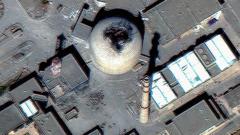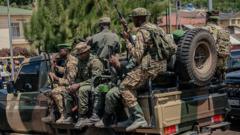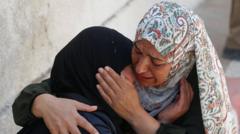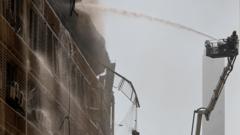**The latest escalation in the Israel-Iran conflict raises critical questions about regional stability and U.S. involvement, with significant military action leaving hundreds dead.**
**Escalating Tensions: The Ongoing Conflict Between Israel and Iran**
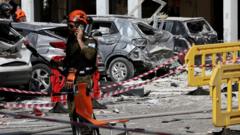
**Escalating Tensions: The Ongoing Conflict Between Israel and Iran**
**Exploring the roots and implications of the recent military exchanges amid heightened geopolitical stakes.**
The conflict between Israel and Iran has significantly intensified following a series of military exchanges that began on Friday. The backdrop involves both nations engaged in aggressive rhetorics, with President Donald Trump deliberating U.S. involvement in supporting Israel’s actions against Iranian nuclear sites. The clash was ignited by Israel's airstrikes targeting a variety of military and nuclear facilities in Iran, prompting retaliatory missile assaults on Israeli territory.
According to reports from Iranian officials, over 220 individuals have reportedly died from the Israeli military and aerial attacks, while Israel cites its losses at 24. These clashes initiated dramatically with Israel’s Operation Rising Lion, executing an offensive that struck locations including the Natanz nuclear site. Israeli Prime Minister Benjamin Netanyahu emphasized the operation aimed to disrupt Iran’s potential to swiftly develop nuclear weapons, arguing that Iran's nuclear ambitions pose an existential threat to Israel.
In a swift response, Iran launched its own offensive, termed True Promise 3, utilizing ballistic missiles aimed at military infrastructure in Israel. Although Israeli missile defense systems intercepted many of the projectiles, several reports indicated significant damage, including an April incident where missile strikes directly hit Soroka hospital in Beersheba, adding to the rising civilian toll.
In subsequent military actions, Israeli forces confirmed the elimination of high-ranking Iranian military figures, including key commanders and nuclear scientists. Amid these exchanges, Israeli defense officials have claimed a strategic upper hand, asserting full air superiority over Iranian regions.
These developments occur as President Trump debates potential direct U.S. military engagement, including the use of advanced weaponry, to further Israel’s agenda of neutralizing Iranian nuclear threats. Though American forces have previously engaged in defensive actions, the prospect of U.S. airstrikes against Iranian nuclear facilities remains controversial, as Iranian leaders warn of severe consequences should America decide to intervene.
Amidst this rapid escalation, further discussions between the U.S. and Israel are anticipated, particularly as diplomatic talks regarding Iran's nuclear program were recently stalled. Iran continues to proclaim that its nuclear endeavors are solely for peaceful purposes, despite concerns from international watchdogs indicating potential breaches of nuclear agreements.
In essence, the conflict's trajectory following the recent escalation is uncertain, revealing the dangerous landscape fraught with military zeal and political implications that could alter the Middle Eastern geopolitical arrangement significantly.
According to reports from Iranian officials, over 220 individuals have reportedly died from the Israeli military and aerial attacks, while Israel cites its losses at 24. These clashes initiated dramatically with Israel’s Operation Rising Lion, executing an offensive that struck locations including the Natanz nuclear site. Israeli Prime Minister Benjamin Netanyahu emphasized the operation aimed to disrupt Iran’s potential to swiftly develop nuclear weapons, arguing that Iran's nuclear ambitions pose an existential threat to Israel.
In a swift response, Iran launched its own offensive, termed True Promise 3, utilizing ballistic missiles aimed at military infrastructure in Israel. Although Israeli missile defense systems intercepted many of the projectiles, several reports indicated significant damage, including an April incident where missile strikes directly hit Soroka hospital in Beersheba, adding to the rising civilian toll.
In subsequent military actions, Israeli forces confirmed the elimination of high-ranking Iranian military figures, including key commanders and nuclear scientists. Amid these exchanges, Israeli defense officials have claimed a strategic upper hand, asserting full air superiority over Iranian regions.
These developments occur as President Trump debates potential direct U.S. military engagement, including the use of advanced weaponry, to further Israel’s agenda of neutralizing Iranian nuclear threats. Though American forces have previously engaged in defensive actions, the prospect of U.S. airstrikes against Iranian nuclear facilities remains controversial, as Iranian leaders warn of severe consequences should America decide to intervene.
Amidst this rapid escalation, further discussions between the U.S. and Israel are anticipated, particularly as diplomatic talks regarding Iran's nuclear program were recently stalled. Iran continues to proclaim that its nuclear endeavors are solely for peaceful purposes, despite concerns from international watchdogs indicating potential breaches of nuclear agreements.
In essence, the conflict's trajectory following the recent escalation is uncertain, revealing the dangerous landscape fraught with military zeal and political implications that could alter the Middle Eastern geopolitical arrangement significantly.





